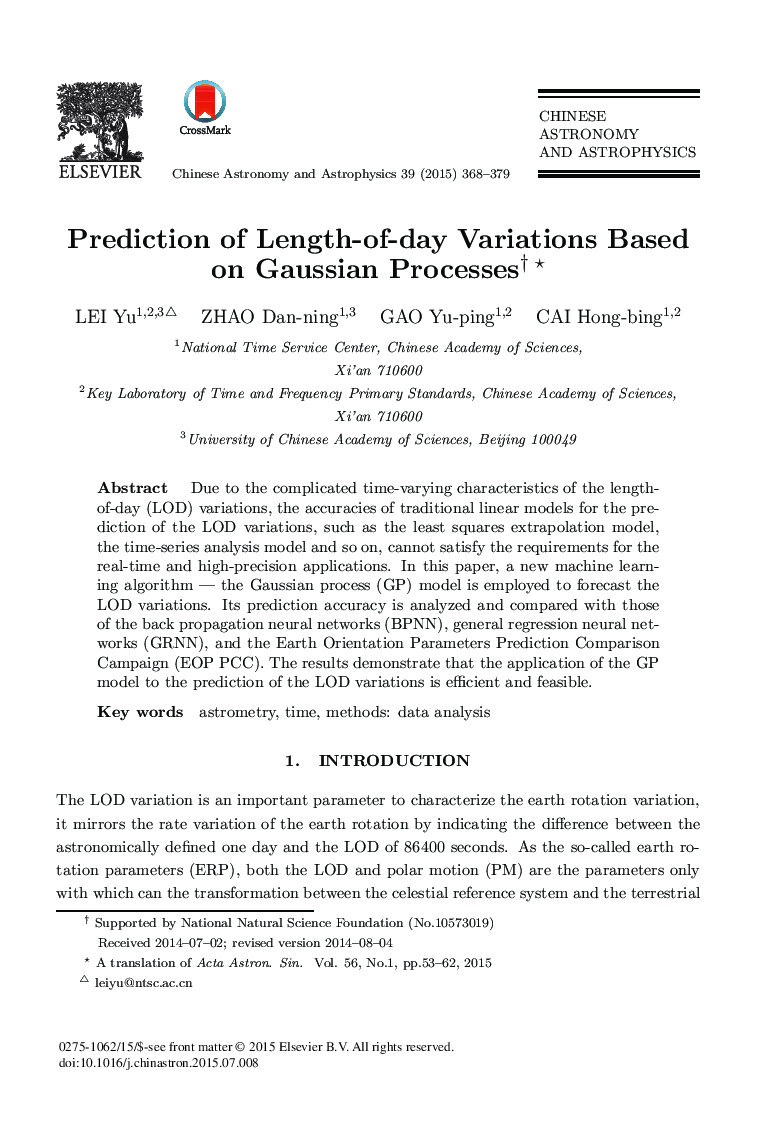| Article ID | Journal | Published Year | Pages | File Type |
|---|---|---|---|---|
| 1771712 | Chinese Astronomy and Astrophysics | 2015 | 12 Pages |
Due to the complicated time-varying characteristics of the length-of-day (LOD) variations, the accuracies of traditional linear models for the prediction of the LOD variations, such as the least squares extrapolation model, the time-series analysis model and so on, cannot satisfy the requirements for the real-time and high-precision applications. In this paper, a new machine learning algorithm — the Gaussian process (GP) model is employed to forecast the LOD variations. Its prediction accuracy is analyzed and compared with those of the back propagation neural networks (BPNN), general regression neural networks (GRNN), and the Earth Orientation Parameters Prediction Comparison Campaign (EOP PCC). The results demonstrate that the application of the GP model to the prediction of the LOD variations is efficient and feasible.
